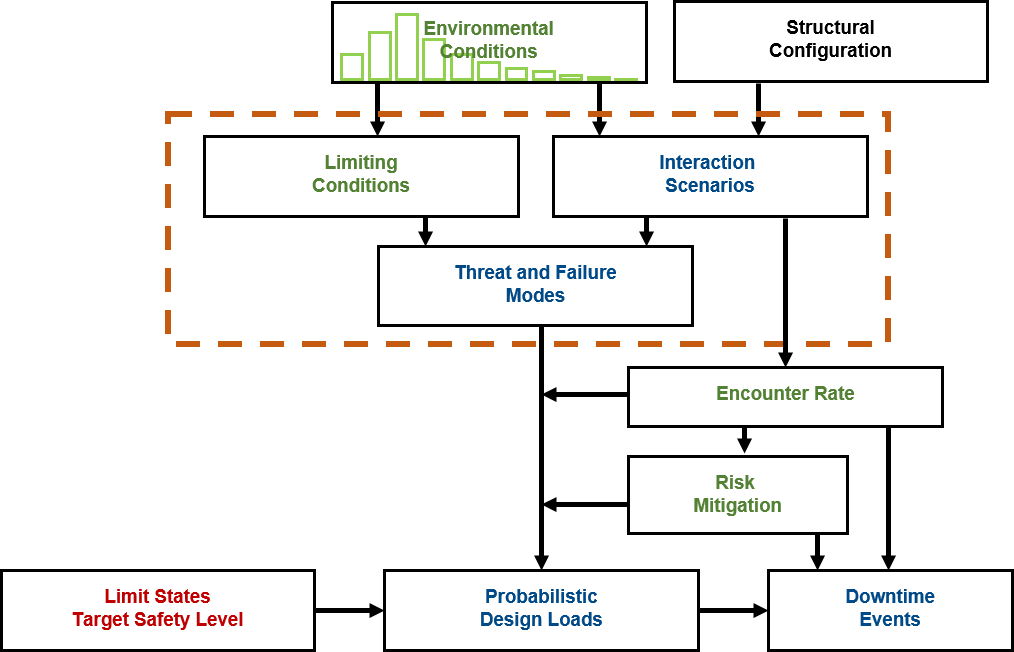Risk-Based Approach to Design
When approaching a design either from conception to FEED design verification, we focus on understanding the basic elements of environmental loading, the full range of environmental loading conditions, and failure modes of the system.
Whether specific inputs are required for deterministic design, or the full range of parameter variability is needed for reliability-based design or to understand operational life performance, including safety, downtime, or benefits of risk mitigation systems, we focus on data data data and an absolute understanding of that data.
While we apply the latest analytical tools to gain the most value from data (e.g. Machine learning, Deep learning, blockchain, etc.), we utilize a hybrid approach where physical processes dominate and the advanced tools guide our understanding and optimized product delivery (e.g. wind, wave, and ice forecasts)
Specialized software and analytical tools include:
- Iceberg loads
- Dynamics of ice structure interaction (DYNIIS)
- Sea ice loads
- CFD
- Wave loads
- Finite Element Modeling
- Structure interaction dynamics

